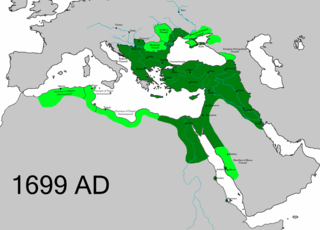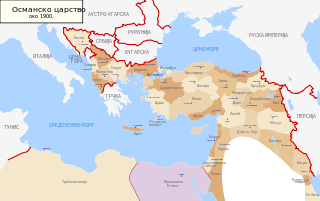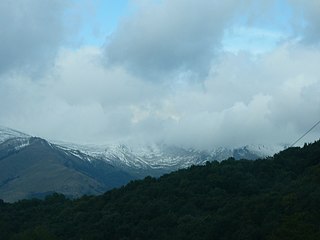Related Research Articles

Mustafa I, called Mustafa the Saint during his second reign, and called Mustafa the Mad by historians, was the son of Sultan Mehmed III and Halime Sultan. He was Sultan of the Ottoman Empire from 22 November 1617 to 26 February 1618, and from 20 May 1622 to 10 September 1623.

The Ottoman Empire, historically and colloquially the Turkish Empire, was an empire that controlled much of Southeast Europe, Western Asia, and Northern Africa between the 14th and early 20th centuries. It was founded at the end of the 13th century in northwestern Anatolia in the town of Söğüt by the Turkoman tribal leader Osman I. After 1354, the Ottomans crossed into Europe and, with the conquest of the Balkans, the Ottoman beylik was transformed into a transcontinental empire. The Ottomans ended the Byzantine Empire with the conquest of Constantinople in 1453 by Mehmed II.

Albert Richard Smith was an English author, entertainer, and mountaineer.

The Grand Bazaar in Istanbul is one of the largest and oldest covered markets in the world, with 61 covered streets and over 4,000 shops on a total area of 30,700 m2, attracting between 250,000 and 400,000 visitors daily. In 2014, it was listed No.1 among the world's most-visited tourist attractions with 91,250,000 annual visitors. The Grand Bazaar at Istanbul is often regarded as one of the first shopping malls of the world.

The historiography of the Ottoman Empire refers to the studies, sources, critical methods and interpretations used by scholars to develop a history of the Ottoman Dynasty's empire.

The history of the Ottoman Empire in the 18th century has classically been described as one of stagnation and reform. In analogy with 18th-century France, it is also known as the Ancien Régime or Old Regime, contrasting with the "New Regime" of the Nizam-i Cedid and Tanzimat in the 19th century.

The economic history of the Ottoman Empire covers the period 1299–1923. Trade, agriculture, transportation, and religion make up the Ottoman Empire's economy.
The 150 personae non gratae of Turkey is a list of high-ranking personages of the Ottoman Empire who were exiled from the Republic of Turkey shortly after the end of the Turkish War of Independence with the Armistice of Mudanya on 11 October 1922. The Sultanate was abolished by the Grand National Assembly of Turkey in Angora (Ankara) on 1 November 1922, and the last Ottoman Sultan, Mehmed VI, was declared persona non grata. Leaving Istanbul aboard the British warship HMS Malaya on 17 November 1922, he was sent into exile and died in Sanremo, Italy, on 16 May 1926.

Balat is in the old city on the European side of Istanbul, on the western shore of the Golden Horn, sandwiched between Fener and Ayvansaray. Historically, it was the centre of the Jewish community in Istanbul.
This is a male family tree for all the Ottoman sultans and their wives.
Donald George Quataert was a historian at Binghamton University. He taught courses on Middle East/Ottoman history, with an interest in labor, social and economics, during the early and modern periods. He also provided training in the reading of Ottoman archival sources.
The Satirist, or the Censor of the Times was a controversial 19th-century British newspaper which featured reports of scandals involving well known residents of London. It was published by Barnard Gregory, who faced multiple libel charges and was later imprisoned due to its articles. The Satirist was frequently criticised by commentators, and James Hain Friswell described it as a "poor imitation of Town and Country".

Ese Kapi Mosque, also "Isa Kapi Mosque", meaning in English "Mosque of the Gate of Jesus", is an Ottoman mosque in Istanbul, Turkey. The building was originally a Byzantine Eastern Orthodox church of unknown dedication.

This is a bibliography of notable works about the Ottoman Empire.

The Battle of Zlatitsa was fought on 12 December 1443 between the Ottoman Empire and Serbian and Hungarian troops in the Balkans. The battle was fought at Zlatitsa Pass near the town of Zlatitsa in the Balkan Mountains, Ottoman Empire. The impatience of the king of Poland and the severity of the winter then compelled Hunyadi to return home, but not before he had utterly broken the Sultan's power in Bosnia, Herzegovina, Serbia, Bulgaria, and Albania.

The Transformation of the Ottoman Empire, also known as the Era of Transformation, constitutes a period in the history of the Ottoman Empire from c. 1550 to c. 1700, spanning roughly from the end of the reign of Suleiman the Magnificent to the Treaty of Karlowitz at the conclusion of the War of the Holy League. This period was characterized by numerous dramatic political, social, and economic changes, which resulted in the empire shifting from an expansionist, patrimonial state into a bureaucratic empire based on an ideology of upholding justice and acting as the protector of Sunni Islam. These changes were in large part prompted by a series of political and economic crises in the late 16th and early 17th centuries, resulting from inflation, warfare, and political factionalism. Yet despite these crises the empire remained strong both politically and economically, and continued to adapt to the challenges of a changing world. The 17th century was once characterized as a period of decline for the Ottomans, but since the 1980s historians of the Ottoman Empire have increasingly rejected that characterization, identifying it instead as a period of crisis, adaptation, and transformation.
Meleki Hatun was a lady-in-waiting to Kösem Sultan, her son Sultan Ibrahim, and later to Turhan Hatice Sultan, Haseki of Ibrahim and mother of Mehmed IV.
Amy Singer is a Professor of Ottoman and Islamic History at Brandeis University. Her major research areas are agrarian relations, philanthropy, and the city of Edirne.
The Cambridge History of Turkey is a four-volume series on the history of the Ottoman Empire and Republic of Turkey.
Mustafa Aksakal is a professor of history at Georgetown University.
References
- Ergin, Nina (2010). "A Social History of Ottoman Istanbul". Middle East Journal . 64 (4): 681–682. - Available on ProQuest, Available on Project MUSE
- Quataert, Donald (2011). "A Social History of Ottoman Istanbul. By Ebru Boyar and Kate Fleet (Cambridge: Cambridge University Press, 2010. 376 pp.)". Journal of Social History . 45 (2): 568–569. doi:10.1093/jsh/shr083. - Available at Project MUSE